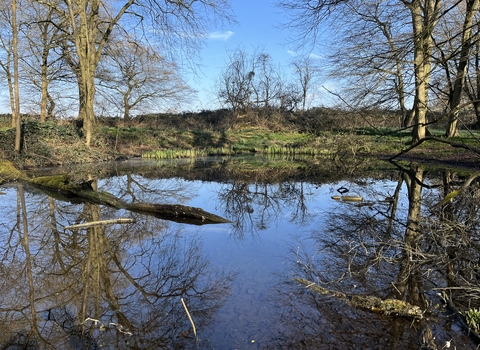A year ago today, The Wildlife Trusts launched a vision to put nature into recovery across at least 30% of land and sea by 2030 and started an appeal to raise £30 million to begin the work. Today we are delighted to announce that in just twelve months we have raised over £25 million. 35 important nature recovery projects are underway to restore land for wildlife.
The UK is one of the most nature depleted countries in the world, with once-common creatures such as hedgehogs, red squirrels and sparrows now critically endangered, and huge reductions in the abundance of wildlife across the board. The Wildlife Trusts are determined to reverse the trend.
Craig Bennett, Chief Executive, The Wildlife Trusts said:
“We are thrilled to have raised £25 million in the past year to fund our vision for 30 by 30 and we’re extremely grateful to every single person who has helped make this happen. It’s fantastic that people want to support our work to reverse wildlife declines and address the climate emergency.
“But this is only the first step to mend our broken natural world by 2030. While The Wildlife Trusts are taking urgent action, some aspects of the Government’s agenda threaten to undermine good work on the ground, by weakening habitat regulations that protect wildlife, weakening the planning rules that guard the environment, and shrinking the powers and resources needed by the Environment Agency to stop river pollution.
“The Government needs to invest far more in nature – we know that more than a £1 billion annually is needed to create and restore wild places. A recent report found that only about 3% of land in England is genuinely protected for nature – yet the Government wrongly persists in claiming the amount protected is 26%. It’s time they faced the huge scale of the task and stumped up the funds to match.”
Coincidentally, the Government launched a 30 by 30 vision on the same day as The Wildlife Trusts a year ago – but believes that far more land is protected for nature than is the reality. The Wildlife Trusts maintain that National Parks and Areas of Outstanding Natural Beauty – which the Government says count towards 30% – are landscape, not wildlife designations, and many of these places are severely depleted of nature. While National Parks and AONBs contain some high-quality natural areas, they cannot count in their entirety towards 30%. Only those areas which are protected and well managed for nature should be included.
The Wildlife Trusts are calling for a new designation in England, Wildbelt, to protect land that is put into recovery for nature.


